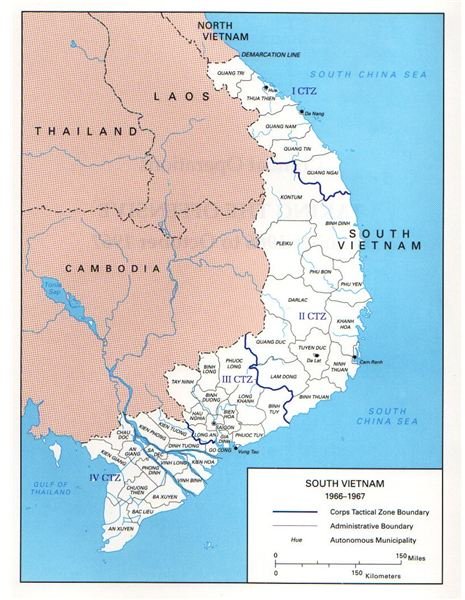The Vietnam War and the Four Presidents Who the Conflict Revolved Around: A High School History Lesson Plan
In the atmosphere of zero-sum domino theories in 1954, President Eisenhower forced a partition of Vietnam into two countries – north and south. Subsequently, the next two presidential administrations increased their commitments to South Vietnam, culminating with Lyndon Johnson choosing to send combat troops in the wake of the Gulf of Tonkin incident.
He would spend his remaining three years in office agonizing as the complex military and political conflict proved to be beyond the capabilities of American military and diplomatic efforts to bring to a satisfactory conclusion. It would be left to Richard Nixon to achieve what he termed “peace with honor”, withdrawing American troops in 1973 and surrendering to the reality that even the strongest of nations has limitations on its power.
Objective: Students should be able to highlight major events in the Vietnam conflict.
Materials: Class copies of presidential speeches
Lesson Procedure
1. Due to the length and complexity of the Vietnam War, it’s impossible to cover it all in one lesson. This lesson will focus on the four presidents who the conflict revolved around and speeches that they delivered on the situation in Vietnam.
2. The format of the lesson will be a jigsaw. Hand out the speeches the night before you are going to teach this lesson. At the beginning of class, divide students into groups according to the speech that they read. Have each group agree to the most important ideas in their speech, and have them write them in a bulleted list.
Set both a number of bulleted points (4 or 5 tend to work for me) and a maximum number of words for each point (8-10). Hold kids to the maximum words or the activity will take too long. Make sure that each student has a copy of his/her group’s notes, then reshuffle the groups so that each new group contains representatives from each of the four original groups. Students should then share their group’s findings with their new group, copying each in turn. Circulate and keep everyone on track.
3. After the groups have finished putting the jigsaw together, debrief each document in turn, adding both perspective and facts about what was going on at the time of each speech.
- Why was each speech important?
- What was each president trying to convey?
- What was the purpose of each speech?
4. The speeches are as follows.
- Eisenhower on the domino theory and Indochina, which can be found here: https://coursesa.matrix.msu.edu/~hst306/documents/domino.html
- Kennedy’s speech was delivered while he was still a senator from Massachusetts, which can be found here: https://www.jfklibrary.org/Asset-Viewer/Archives/JFKPOF-135-015.aspx
- Johnson during the height of the war, which can be found here: https://millercenter.org/president/speeches/detail/4041
- And Nixon announcing the end of America’s involvement, which can be found here: https://millercenter.org/president/speeches/detail/3884
References
This post is part of the series: The 1960s: Conflict, Rebellion and Change
In this collection of history lesson plans, we focus on the major personalities and events of the 1960s - including the Kennedy and Johnson administrations, the Vietnam War, and the Civil Rights Movement.
